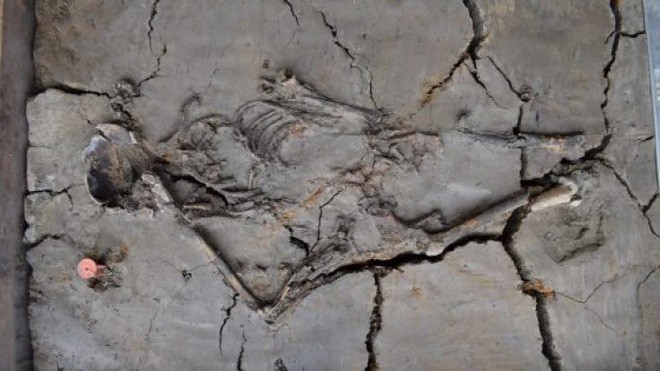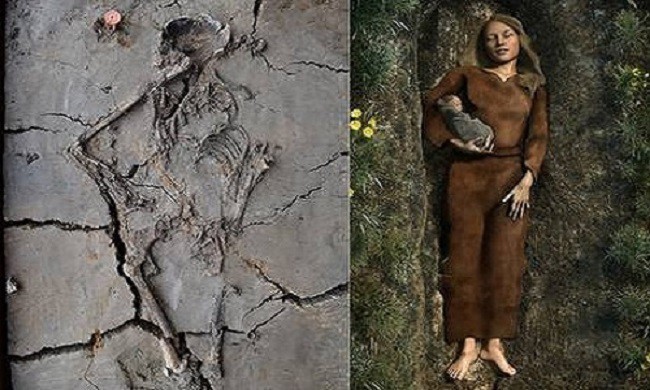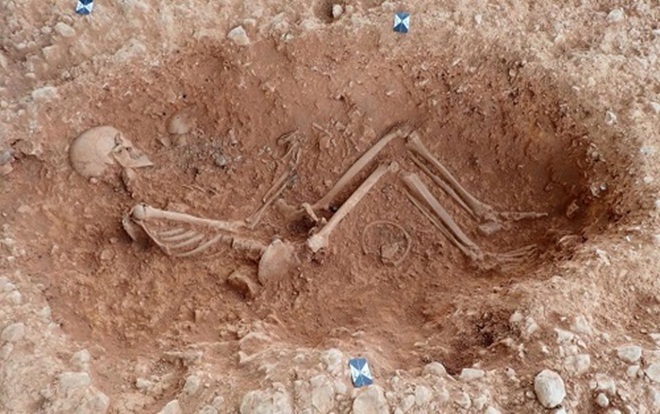According to International Business Times, archaeologists recently discovered the oldest child burial grave ever found in the Netherlands. After excavating the tomb, they were extremely surprised to see the remains of a newborn baby with intact teeth lying in his mother’s arms.
Scientists determined that these remains date back up to 6,000 years and this will be an important discovery that helps us better understand the burial rituals of Stone Age hunters. This is the oldest child burial ever found in the Netherlands. It was discovered at a site in Nieuwegein in the province of Utrecht and dates back to the Stone Age.

Archaeologists have discovered the oldest child grave ever found in the Netherlands
Through observation, scientists noticed that the right arm of the skeleton of a woman about 30 years old was bent at a rather strange angle. It looks very curved instead of straight like the normal posture of other skeletons unearthed here.
Closer inspection revealed the infant’s bone fragment as small as her arm and suggested that the woman had held her child when she was buried.
“The woman’s body position was different from what we had found so far, i.e. normally her limbs would be straight. We later discovered that she was in fact hugging a child,” project leader Helle Molthof told Dutch broadcaster NOS.
The bone fragments sent for analysis included a small jaw with several teeth. From there, scientists concluded that the newborn died when he was a few months old.

This discovery promises to open up many unanswered mysteries about human life since the Stone Age.
“It’s really striking when you find these tiny baby teeth that were buried in clay for 6,000 years and are quite similar to the baby teeth of today’s children, when they molt and are treated,” said Molthof. Parents keep them carefully in boxes”.
DNA tests will show whether the woman is the child’s mother and help determine the child’s sex.
Archaeologists hope that the tomb will tell them about the burial rituals of hunter communities along the banks of the River Vecht.
“We knew how they lived, what they ate, what their homes were like, but we didn’t know much about how they ritually buried their dead and what happened,” said Molthof. with the children of that time”.






